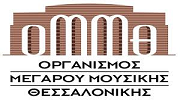
14 Οκτωβρίου 2016


|
Αίθουσα "Μωρίς Σαλτιέλ" |
|---|---|
| 14:30 - 15:30 |
From 'Psychology of art' to semiotics of culture
The first important conceptualization of semiotics of culture is based on the understanding of culture as a system of different sign systems and text as a system of different codes. With the disciplinary development of cultural semiotics the dynamics of cultural processes became more important. Inner-cultural dynamics was understood as a kind of complexity, where every important level of culture (social environment, language, historical style etc) has its own speed, and for the understanding of dynamics as a whole, the analysis of correlations between these different levels is of crucial importance. Outer-cultural dynamics is the processuality of reception, involving the correlation of different forms of interpretation (decoding, extracoding, under- and overcoding according U .Eco) or types of dialogue (J. Lotman). The last two books of J. Lotman placed the notion of dynamics into a new context. “Culture and Explosion” and “Unpredictable Workings of Culture” are complementary books. Introducing the notion of explosion was at the same time the actualization of the complementarity of this notion. Complementarity not only in the works of J. Lotman but also historical complementarity. “Culture and Explosion” was a socially oriented book and in the center there was the concept of socio-cultural explosion. But this explosion was interpreted by Lotman temporally. The first stage of explosion was the unpredictability, the possibility of different developments. The second stage was very important: “The moment in which the explosion is exhausted represents the turning point of the process. In the sphere of history, this is not only the originating moment of future development but also the place of self-knowledge: the inclusion of those mechanisms of history which must themselves explain what has occurred”. The time between the two stages of explosion is the time between the first reaction and the finding of the language for the description and the conceptual understanding of explosion. “Unpredictable Workings of Culture” describes an explosion in the context of individual creativity. Explosion as innovation is a result of socio-cultural processes. Explosion as inspiration is a result of intrapersonal communication: “Inspiration is that moment of creative, emotional, and intellectual tension when a case of untranslatability is transformed by explosion into a case of translatability. This always occurs in an individual consciousness—after which the collective consciousness makes use of the results”. The existence of these two aspects in two books of J. Lotman actualizes one source in the heritage of the Tartu-Moscow semiotic school – Lev Vygotsky. Vygotsky was explicitly important in the early semiotics of 1960-ies. But implicitly he was important also for late Lotman. Especially the book “Psychology of Art” has an important place in the dialogue between Vygotsky and Lotman. Explosion was an actively used notion in various works of Vygotsky. “A work of art perceived coldly and prosaically, or processed and treated to be perceived in this way, saves much more energy and force than if it were perceived with the full effect of its artistic form in mind. Although it is an explosive discharge, art does introduce order and harmony into the “psychic household,” of our feelings“. For Lotman, the process of creation was important, for Vygotsky, the process of reception, reaction, response. For Vygotsky „our aesthetic response /.../ is an explosion“ and the highest form of this response is a catharsis: „Catharsis of the aesthetic response is the transformation of affects, the explosive response which culminates in the discharge of emotions“. The history of the notion of explosion gives new possibility for understanding not only the last books of Lotman and the conceptuality of his semiotics of culture but also the logic of development of semiotics of Tartu-Moscow school and the actuality of the heritage lying in this development. ΟμιλητήςPeeter Torop
Καθηγητής Σημειωτικής Πολιτισμού στο Τμήμα Σημειωτικής του Πανεπιστημίου Tartu (Εσθονία) |
15 Οκτωβρίου 2016


|
Αίθουσα "Μωρίς Σαλτιέλ" |
|---|---|
| 09:00 - 10:00 |
Umwelts in the (digital) Semiosphere: heterarchical semiosis in digital culture
This talk will outline and interdisciplinary semiotic perspective to multimodal perception and cognition in relation to emerging immersive and interactive digital technologies. It will therefore make explicit links between biosemiotics, cognitive semiotics, and cultural semiotics. Seminal concepts such as the “umwelt” and the “semiosphere” will be considered simultaneously from the biological, the cognitive and the cultural point of view with a heterarchical non-reductionist perspective. Concomitantly, the notion of “technosphere” as the interface between cognition and culture will be introduced. The convergence of digital and multimodal cognitive technologies is determining an ever faster expansion, connectivity and ubiquitousness of the technosphere. The prospect is that through ubiquitous, digital, interactive, immersive and representational technologies we will be continuously ‘immersed’ and have the possibility to interact in an ‘on-line’ cultural process mediated by all kinds of new ways of representing our thoughts, emotions, ideas, beliefs, opinions and behaviors. It is therefore necessary to envision new empirical avenues to investigate not only how the new innovative representational and interactive technologies change or alter our cognitive functions, but also how they impact the global cultural dynamics. ΟμιλητήςLuis Emilio Bruni
Αναπληρωτής Καθηγητής στο Τμήμα Αρχιτεκτονικής, Σχεδίου και Τεχνολογίας Μέσων Επικοινωνίας στο Πανεπιστήμιο Aalborg (Κοπεγχάγη), και Πρόεδρος της Σκανδιναβικής Εταιρείας Σημειωτικών Μελετών |
| 17:30 - 18:30 |
Synechism, Umwelt and cultural analysis
Since 1959, when C. P. Snow identified two seemingly incompatible cultures – the ‘hard’ sciences and the non-science disciplines such as arts, humanities and social science – there have been attempts to heal a rift in intellectual investigation. Biosemiotics has been touted as a chance, greater than any hitherto, to bridge the gap between the two cultures through semiotics as it has been reinvigorated by biosemiotics. This paper argues that the insights of biosemiotics offer the prospect of a renewed cultural analysis. This is partly because of the way that biosemiotics steers a path between over-interpretation and reductionism, but also because the nascent biosemiotic cultural analysis is built on foundations laid by semiotic research into culture. The paper attempts to amplify some aspects of biosemiotics and to present a view of some cultural implications. The picture of biosemiotics offered will be necessarily limited and is not meant to constitute a comprehensive survey. However, this talk aims to shed light on culture from the angle of biosemiotics, proceeding from the argument often cited by Sebeok that culture is a mere compartment of nature. ΟμιλητήςPaul Cobley
Καθηγητής Γλώσσας και Μέσων Επικοινωνίας, καθώς και Διευθυντής Ερευνών στην Σχολή Μέσων Επικοινωνίας και Παραστατικών Τεχνών στο Πανεπιστήμιο Middlesex |
16 Οκτωβρίου 2016


|
Αίθουσα "Μωρίς Σαλτιέλ" |
|---|---|
| 09:00 - 10:00 |
Visual Communication and Multimodality
Since early cave paintings, the status of pictorial representations has been controversial. On the one hand, pictures were considered as inferior to words when it cam to expressing abstract thoughts. On the other hand, an almost magical aura has been attributed to them. This ambivalent attitude has prevailed to the present day, with all kinds of newly invented pictorial media such as photography or virtual reality evoking reactions that range from greatest enthusiasm to utmost skepticism. Against this background, my talk will make an attempt at clarifying the differences between communicative language use and communicative picture use. This will lead me to some remarks on the dependence of both language and pictures on a multimodal context of communication, which will ultimately result in two theses: (1) The use of pictures is as fundamental as the use of language. (2) Visual perception is more fundamental than other kinds of perception. ΟμιλητήςKlaus Sachs-Hombach
Καθηγητής Σπουδών των Μέσων Επικοινωνίας στο Ινστιτούτο Επιστήμης των Μέσων Επικοινωνίας του Πανεπιστημίου Tubingen. Συνεκδότης του περιοδικού IMAGE. |


